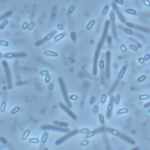Link to Pubmed [PMID] – 28868639
Electrophoresis 2017 Sep;
The success of microfluidic immunocapture based on magnetic beads depends primarily on a sophisticated microscale separation system and on the quality of the magnetic immunosorbent. A microfluidic chip containing a magnetically stabilized fluidized bed (μMSFB), developed for the capture and on-chip amplification of bacteria, was recently described by Pereiro et al.. The present work shows the thorough development of anti-Salmonella magnetic immunosorbents with the optimal capture efficiency and selectivity. Based on the corresponding ISO standards, these parameters have to be high enough to capture even a few cells of bacteria in a proper aliquot of sample, e.g. milk. The selection of specific anti-Salmonella IgG molecules and the conditions for covalent bonding were the key steps in preparing an immunosorbent of the desired quality. The protocol for immunocapturing was first thoroughly optimized and studied in a batchwise arrangement, and then the carrier was integrated into the μMSFB chip. The combination of the unique design of the chip (guaranteeing the collision of cells with magnetic beads) with the advanced immunosorbent led to a Salmonella cell capture efficiency of up to 99%. These high values were achieved repeatedly even in samples of milk differing in fat content. The rate of nonspecific capture of Escherichia coli (i.e. the negative control) was only 2%.
